Media | Articles
Original Owner: This Georgia Man Bought an Olds 4-4-2 with Money He’d Been Earning Since Age 9
A paperboy in the early 1960s would have been dropping some weighty headlines on his customers’ doorsteps. As a 9-year-old in Macon, Georgia, in 1961, though, Johnny Davis was more focused on a goal: earning enough money from his daily route to buy a car by the time he got his driver’s license.
Johnny remembers being heavily influenced by his 3-year-older brother Tommy’s interest in cars. Still, at that age, he could have no idea that his own auto curiosity would, eight years later, put him in a type of model not yet in the market: the midsize muscle car.
Outgrowing the paper route at age 15, the enterprising young Johnny boosted his earnings to about $1 per hour at a grocery store job. The muscle car scene was hopping by 1967, and Johnny began to follow it more closely. Two years later, with about $3000 saved, he went car shopping with his father, who would need to co-sign for the purchase, due to Johnny’s age.
Coming from a “General Motors family,” Johnny found just what he wanted with the 1969 Oldsmobile 4-4-2. Essentially a muscled-up Cutlass, the 4-4-2 was one of four corporate cousins from the GM fleet. It was sportier in design and character than that year’s Buick GS400 yet not as brash as the GTO, and it had a more upscale interior than the Chevrolet Chevelle SS396. Johnny found the Olds just right.
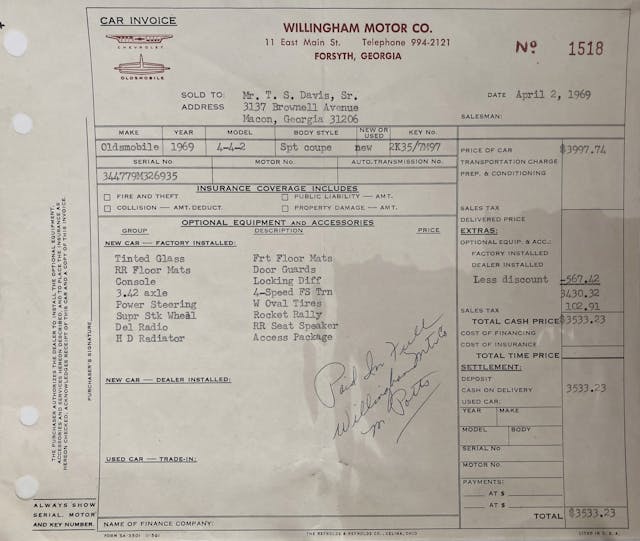
He took delivery of his dream car in April 1969 and found it worth the wait.
“I remember when I first saw it at the dealership. I thought it was the most beautiful thing I’d ever seen,” he recalls. (We’ll note that this was a few years before he met the woman he’d marry.) “I got to drive it to school for the last six weeks. It was a memorable time.”
The silver muscle car drew admiring glances at school but also made some people green with envy.
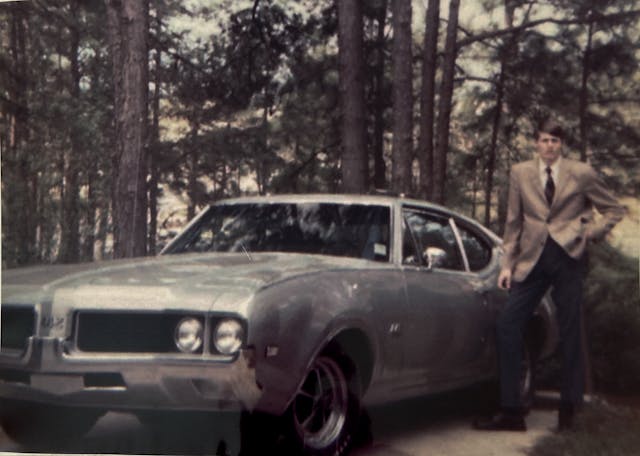
“A lot of people thought my parents bought it for me, but when I wanted something, I always saved my money. When I was a kid, an uncle started a savings account for me with five dollars at a local bank. Aside from what I earned, I always saved any money I got for birthdays or Christmas, which was probably a dollar or two. I knew I wanted to buy a car when I got my license.”
Nearly 55 years, 150,000 miles, and one restoration later, Johnny’s 4-4-2 looks and runs as young as ever, and he still drives the car to local shows and cruises, and just for plain fun. He never tires of the conversations sparked when old friends see him with the Olds.
“They all say, ‘I can’t believe you still have that car!’”
Factory basics: Oldsmobile 4-4-2
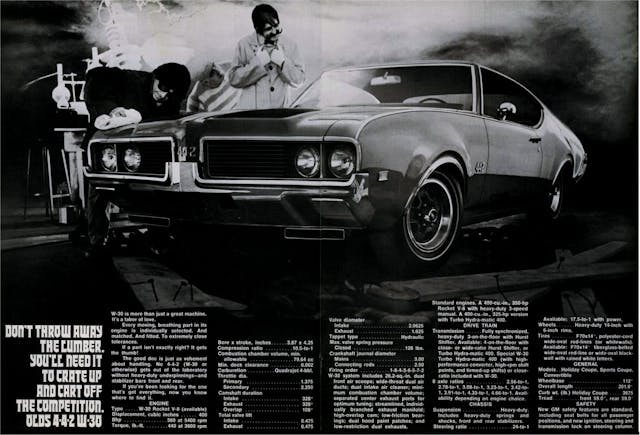
The Oldsmobile 4-4-2 entered its sixth season in 1969, having arrived in spring 1964 as the “Police Apprehender Pursuit” option package (code B09) for any F85/Cutlass, except the station wagon. The upgrade combined a tweaked, 310-horsepower version of Oldsmobile’s new 330-cubic-inch Rocket V-8 with a four-speed manual transmission, plus chassis bits from the police parts bin. The package price was $285 for an F85 model or $136 on the upscale Cutlass, which already had a 290-hp 330 four-barrel standard.
Cars so equipped wore cryptic “4-4-2” badges, which looked like a cylinder displacement figure but was not. Olds spelled out the meaning as “four-barrel carburetor, four-speed transmission, and dual exhausts.” (It was spoken as “four-four-two,” not “four-forty-two.”)
Marketplace
Buy and sell classics with confidence
Olds went low-key on external styling differences for the 4-4-2, and even lower-key on the marketing. Ads touted the police car connection rather than overtly enticing young buyers with street performance. Pontiac, meanwhile, mashed the pedal down on marketing for its GTO option introduced the previous fall. Olds built just 2999 B09-equipped models for the second half of the 1964 model year, while 32,405 buyers scooped up GTOs over the whole 12 months.
On the street, the Olds 4-4-2 was quick fun, but the GTO outshone it on the strip, especially with its Tri-Power three-carburetor option for the 389-cubic-inch V-8. Things got hotter from there. While the GTO rocketed ahead in sales with the restyled 1965 version, Olds revved up its 4-4-2 with a new 400-cubic-inch engine, rated at 345 hp. A three-speed manual was now standard, and buyers could choose the optional four-speed stick or Jetaway two-speed automatic. (Now Olds said the first “4” in 4-4-2 stood for 400 cubic inches.) Production rose to 25,003, while the GTO tripled that number.
To match the GTO’s offerings, the 4-4-2 had a triple two-barrel carb option for 1965 and 1966, and Olds gave up on defining the meaning of “4-4-2.” Meanwhile, over at Chevrolet, it was just the sound of crickets chirping. The first Chevelle SS396 arrived as a ’65 in a limited edition of just 201 cars (option Z16), and the regular-production SS396 showed up for 1966.
General Motors introduced redesigned A-body midsizers for 1968, with the curvy new look injecting even more excitement into the muscle car versions. The coupes rode on a shorter, 112-inch wheelbase (down from 116) and flaunted semi-fastback profiles with the roof’s C-pillars flowing into the quarter panels. Olds made the 4-4-2 a separate model that year.

The 400-cubic-inch V-8 returned, but now with the longer stroke from the 455-cubic-inch version of the engine (4.25 inches) paired with a smaller 3.87-inch bore. The triple-carb option was dropped, but the standard four-barrel engine offered 350 horsepower, or 325 with the automatic and its milder cam. A W30 performance upgrade came with an official 360-hp gross rating. The 4-4-2 had its best year ever, with 36,642 made.
Car Life tested a 1968 4-4-2 automatic (now the three-speed Turbo-Hydramatic) with the 3.42 axle and got 0–60 mph in 7 seconds and the quarter mile in 15.13 at 92 mph. A four-speed with that axle ratio, driven by a hot shoe, would have easily dropped the figure into the 14s.
The 1969 4-4-2 was a mechanical repeat of the ’68, while the design gained a revised grille and headlight treatment, a dual-bulge hood, and vertical rather than horizontal taillights. Sales dropped to 29,839. Of those, the Sports Coupe (with B-pillar) accounted for 2984. The Holiday hardtop sold 22,560 and the convertible 4295.
Johnny’s 4-4-2
Having turned 17 in January 1969, Johnny went with his dad on the 15th of the month to Willingham Motors in Forsyth, about 25 miles north of Macon, to order his dream car. Educated by Hot Rod magazine, the teen knew how to properly spec his ride. He started with the 4-4-2 Sports Coupe, which was about $70 cheaper and a few pounds lighter than the pillarless Holiday hardtop.
The $3141 base price (plus $97 destination fee) included the 400 V-8, three-speed heavy-duty manual transmission with floor shifter, Strato bucket front seats, full interior carpeting, Deluxe interior decor, Deluxe steering wheel, Wide Oval redline tires, imitation wood grain instrument panel trim, chrome window and drip moldings, and a heavy-duty battery.
Johnny chose platinum for the color and ordered about $765 in performance- and style-focused options on top of that, but no air conditioning for the steamy Georgia summers. For $39.87, he at least got the Soft-Ray tinted windshield and windows.
“If it took away from performance, I didn’t want it,” he remembers.

Going right for the good stuff, Johnny specified a four-speed stick, anti-spin rear axle with 3.42:1 ratio, Super Stock I styled-steel wheels, and power steering (but not power brakes). He dressed up the cabin with the Rocket Rally Pac gauge option and center console. A stereo was too expensive, so he ordered the “Deluxe Pushbutton” AM radio and “Bi-Phonic” rear speaker for $87 combined. (That’s about $750 today—for an AM radio!)
All those goodies pushed the 4-4-2’s price tag to nearly four grand. Johnny got a much-needed $567 discount from the dealer, a friend of his father’s. That brought the cash price down to $3553 with Georgia’s sales tax.
“I had a little over $3000, so I had to borrow $600,” he remembers. That went against the practical young man’s grain, but he really wanted the car.
Daily driver and dating car
In September 1969, Johnny took the 4-4-2 to Georgia Southwestern College (now Georgia Southwestern University) in Americus, where he majored in history. In addition to occasionally making the 75-mile trip home, he would take the 4-4-2 to Daytona Beach, Florida, with some friends every summer. “We still get together with them sometimes,” he says.
A few years later, the 4-4-2 took on a critical mission. “I met my wife, Kathy, in 1973. We dated with the car, so that added to its meaning for me,” Johnny recalls. He adds, though, that they drove her Mustang for the wedding.
The fast Olds remained his daily driver for about another decade and was always parked outside. “The paint faded pretty quickly,” he recalls.
After college, Johnny made a career in the electrical wholesale business, and retired after 42 years.
A long sleep, and then awakening
In 1985, with 140,000 miles on the clock, the 4-4-2 went into Johnny’s one-car garage and under a cover for a 15-year rest. The family cars remained outside. He later built a two-car garage with a plan to take the Olds apart for a restoration and still have room to keep his wife’s car inside.

The restoration and rebuild would span five years. “After the first day of taking the 4-4-2 apart, the garage was already packed,” he says.
His son, Zack, began helping at a young age. “When Zack was 10, I’d go off to work, leaving him with degreaser and a brush,” Johnny says. “I’d come home, and he’d have the transmission cleaned up.”

Johnny credits friend James Powell with helping make the rebuild possible. (Powell also tipped off Hagerty to this story.) “I’m not that mechanical, but he’s been a mechanic all his life. He’d tell me the things I needed to buy. I’d get them, and we’d work on the car once a week, doing one thing at a time—the trans one week, the rear the next, like that. It took about five years to do it all.”
Johnny was particular with his choices. “I sent the bumpers to Michigan to get re-chromed. Trim and other pieces came from all over the country. I used mostly original Oldsmobile parts,” he explains.
With the body off and engine sent out for a rebuild, the frame was powder-coated. Johnny added front disc brakes, which necessitated 15-inch wheels to replace the original 14-inchers. He found the correct wheels in Portland, Oregon. The engine got an aluminum manifold with a Holley four-barrel carb to replace the original Quadrajet.
“I saved everything I took off the car and boxed it up,” he says.
When it came to paint, Johnny wanted silver but was willing to deviate from the original factory shade after seeing a 2003 Mercedes-Benz. “The Mercedes silver paint looked wet, and that’s what I wanted.” Johnny got the paint code and hauled the disassembled 4-4-2 to The Installation Center, Chris Hopkins’ muscle car specialty body shop in Cleveland, Georgia.
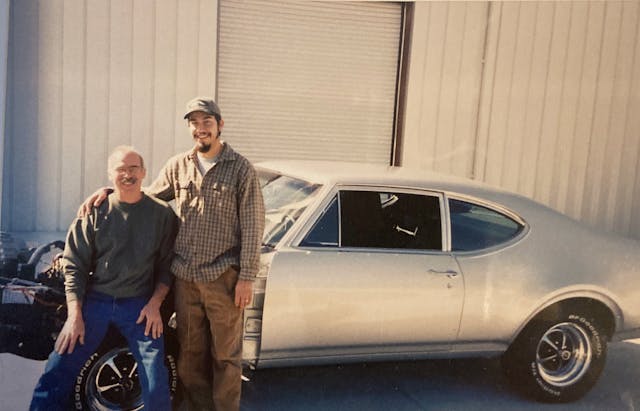
“They got everything good and straight. This was one of the best things I did for the car,” he says. “Almost twenty years later, the paint still looks wet.”
Other than having the original AM radio restored and converted to add FM, the interior was left stock. Johnny has driven the car about 10,000 miles since completing the restoration in 2005, and he looks forward to adding more.
4-4-2 Memories
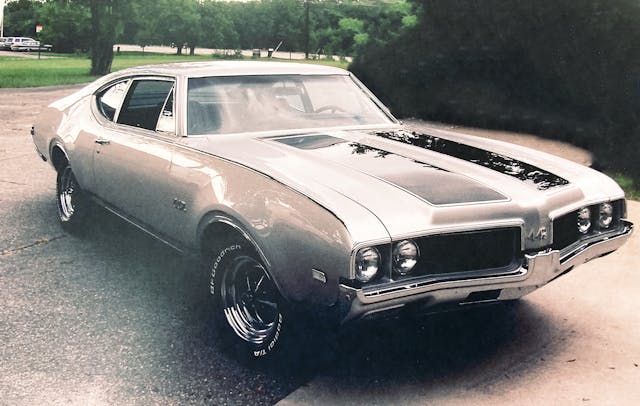
Hagerty: There were a lot of great muscle cars to choose from in 1969. What made you pick the 4-4-2?
JD: Most people I knew had Camaros, Chevelles, and Mustangs. I wanted something less common, though I still looked at the GTO and the Plymouth Road Runner. When I closed the door and trunk on the Road Runner, the car felt like a tin can to me. The 4-4-2 seemed more substantial.
Hagerty: What did your parents think of your car choice?
JD: My father ended up loving the car, too. Six months after I bought it, he and my mom drove it on a trip to Florida.
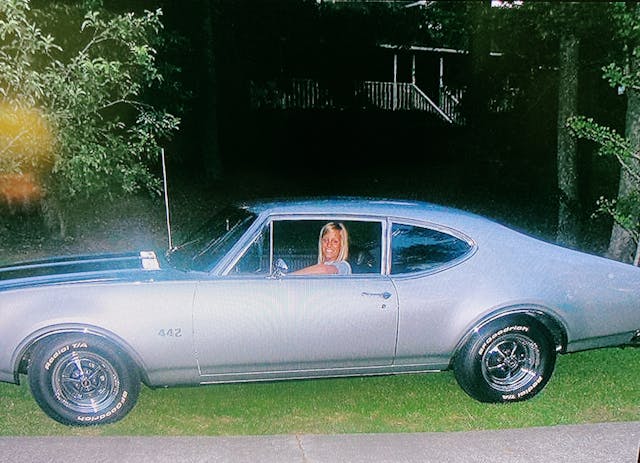
Hagerty: A 17-year-old high-schooler driving an Olds 4-4-2 … that could have invited trouble for some young drivers. Were you ever in an accident?
JD: No real accidents, but the first month I had it, I drove to school, and a friend put a dent in the Olds emblem on the back—almost on purpose, I think. I was devastated! But I bought a new emblem and took it to a body shop. They pushed out the dent and charged me fifteen bucks. It really was nothing, just that the car was brand new.
Hagerty: What made you want to keep the 4-4-2 all these years?
JD: When you work for something, you appreciate it more. That’s probably the reason I kept it. It always meant something to me.
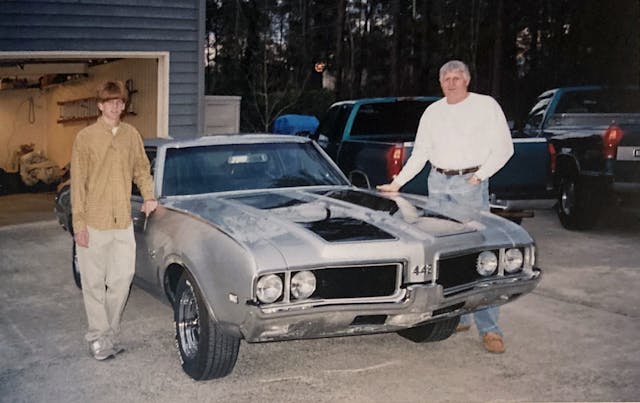
Hagerty: Have people tried to buy your car?
JD: When I had it sitting all those years, people would ask if I wanted to sell. And since I’ve had it redone, more ask when they see it. Anything can be bought, but the value to me is more than what the car is worth. I tell them, ‘If you buy the car, you have to buy my memories, too, and you probably wouldn’t want to pay the price for those.’
Hagerty: What are some of your best memories with the car?
JD: I enjoyed driving up and down the strip between Shoney’s and McDonald’s, with some occasional light-to-light races. But my favorite times with the car were when I was dating my wife.
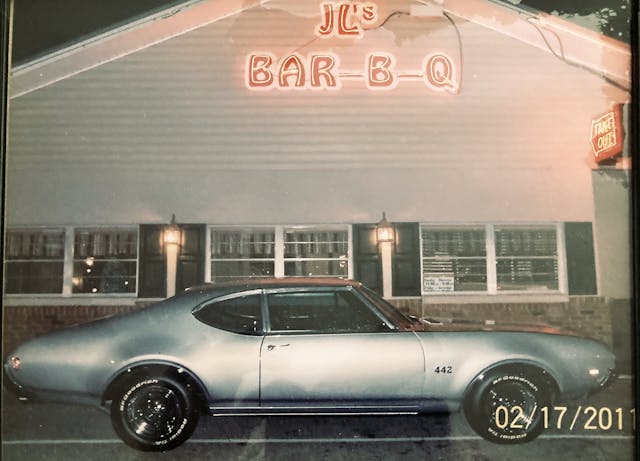
__
Car: 1969 Oldsmobile 4-4-2
Owner: Johnny Davis
Home: Macon, Georgia
Delivery Date: April 2, 1969
Miles on Car: ~150,000
Are you the original owner of a classic car, or do you know someone who is? Send us a photo and a bit of background to tips@hagerty.com with ORIGINAL OWNER in the subject line—you might get featured in our next installment!
***
Check out the Hagerty Media homepage so you don’t miss a single story, or better yet, bookmark it. To get our best stories delivered right to your inbox, subscribe to our newsletters.
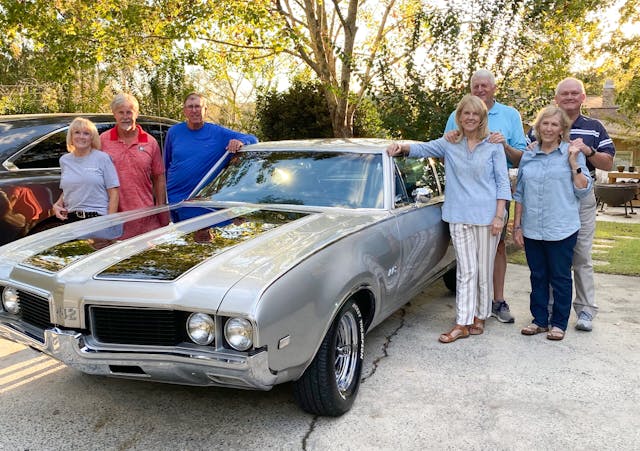









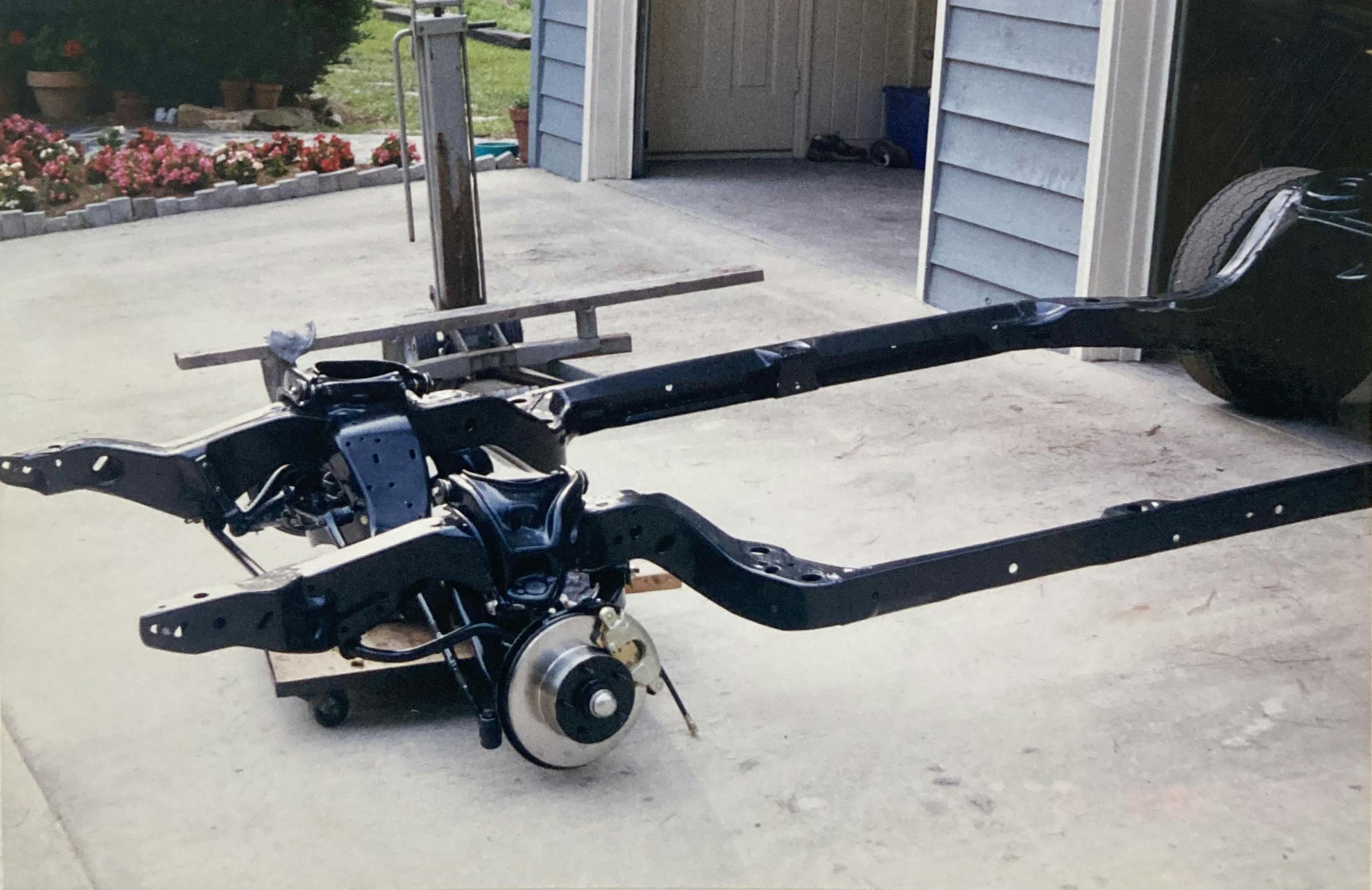











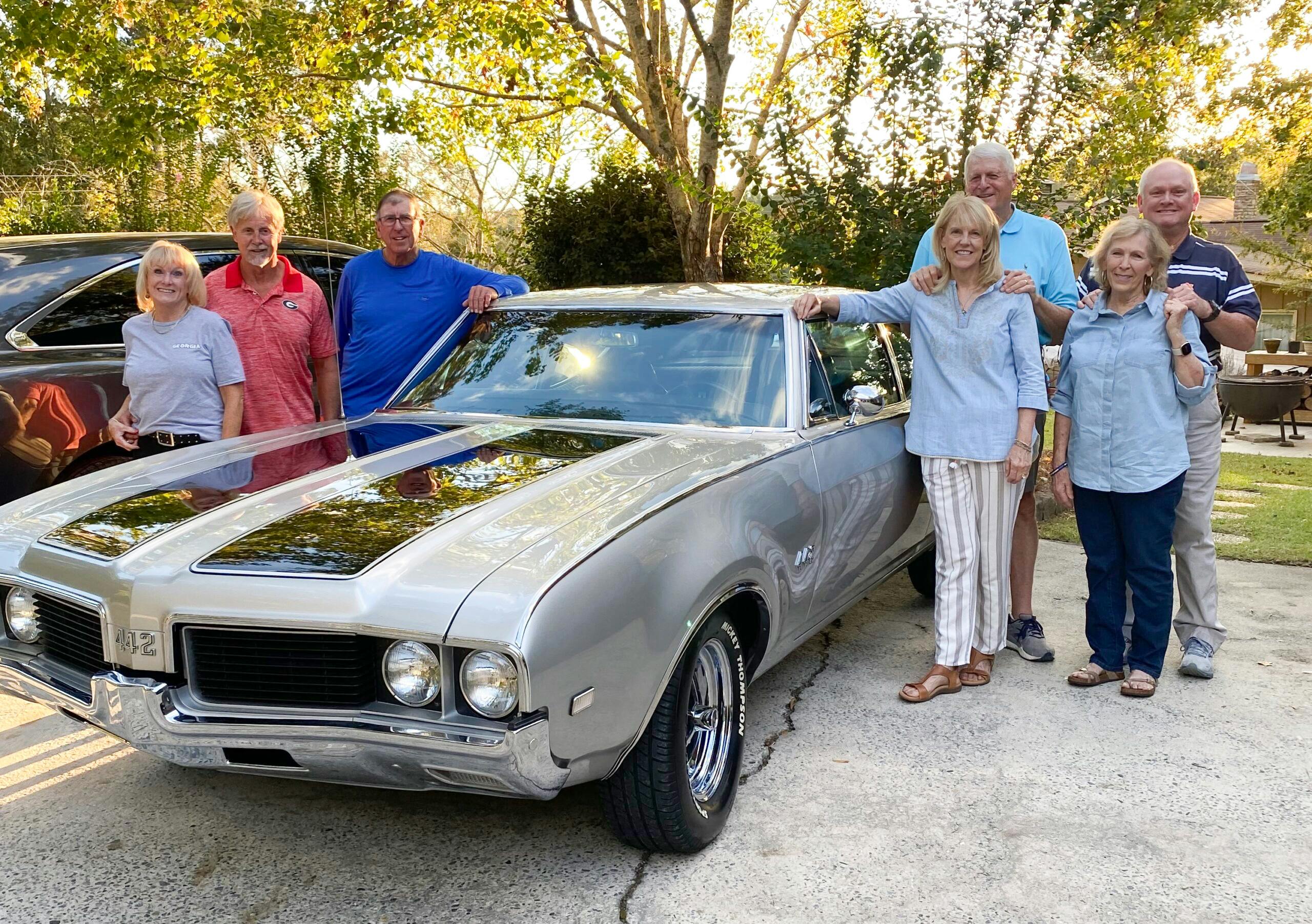
A friend is just finishing a 72 Cutlass Convertible his father purchased new. It has every option but one. the 442 package.
It has the 455, it has the thermometer on the mirror and all but he did not get the 442 package. So when he restored it he added the hood and stripes to make a real 455 clone.
This is the car my friend came home from the hospital in years ago so this car means much.
He is done enough to take on the Hot Rod Tour this year. I am glad he has finally gotten the car mostly done as it was a pending project for year and now he can really enjoy it.
I’m not sure that Olds gave up on defining the meaning of “4-4-2 package. As I understand it the 442 was:
4 barrel carb, 4 on the floor and dual exhaust.
When the 2 speed Jetaway automatic and 3 speed manual became available in 1965, and then the 3 speed Turbo Hydra Matic in 1967, that is when “4 on the floor” became hard to define.
Great story! Made my day. That has to be one of the nicest looking 442’s I’ve ever seen. It must be the Mercedes Silver it’s painted with. Just stunning!
Great story! When he done a ‘frame off’, it couldn’t have been any more litteral when I 1st observed the body resting on a 4×4 on cinder blocks, 4′ high. Wish i saw that pic before I sold my ’69 Firebird 400 I wanted to do a frame off, but thought impossible w/o a lift. She was super straight, no cancer, #s matching, perfect candidate. I’m now convinced anythings possible.
True muscle cars can tug at your heart strings. Although I’m not the original owner I’ve had my 68, 442 for 46 years. Nothing more fun than driving down the road in a cool muscle car. The silver paint and black interior 4 speed of this 69 442 has got to be as fun as it gets. Very well done and a very pretty car. Keep driving and making memories.
Triple-two carbs were not available in ’67. GM ban on multiple carbs except Corvette was instituted for the ’67 model year.
Good catch. I meant to write 1965 and 1966. We’ll fix.
Hi….the tri-carbs were only available in 1966.
Great story, Great car. My boys find it hard to believe at one time it was possible to have a “regular” part-time job and be able to buy cars such as this. I know that 1969 and 1970 were not the best of times for many young American men on “All-expenses paid” trips to SE Asia, but it is hard not to think it might have been a better time. I know – “Nostalgia ain’t what it used to be”
One of my older brothers ordered a new 1972 Chevelle when he returned from Vietnam in November 1971. 350, 4-barrel 4 speed 3.31 Positraction, power front discs, bucket seats, AM 8 track, no A/C and no power steering (that thing was light for a Chevelle). First thing it got on Day 2 was a set of Cragar S/S wheels and some Polyglas GTs. His fiancée drove it more than he did; regardless, when I bought it at age 16 in 1978 it only had 49,000 miles on it. I gave it back to him in 1990 with 150,000. Flash forward to now: The original 350 / 4-speed is crated up and stored, and it has an old-school style “LT-1” with a Tremec 5-speed conversion. Currently undergoing an active frame off preservation (body is done; needs interior and minor details finished). He also has a ’65 ‘Vette roadster that he bought used 40 years ago – his daughters are OK with the ‘Vette but are downright rabid about that Chevelle………..can’t blame ’em.
I like the older brother stories as I am the youngest of the four boys in my family. God Bless them as I am the last one standing. Man did I learn a lot by watching and listening to them . That worked – this didn’t! Very important lessons.
Great story and I love the Chevelle respect from his daughters.
Thank him for his service.✅
Motor on!
Thanks 😎
Great story and great car. Always loved the 442’s, one of my favorite “classy” muscle cars.
YOU ARE A GREAT AMERICAN WORKER! I STARTED SAVING EARLY AT 15 AND BOUGHT EVERYTHING WITH CASH INCLUDING MY CARS AND I OWN EVERYTHING OUT RIGHT TODAY INCLUDING MY HOUSE BY WORKING HARD AND SOMETIMES I HAD TWO JOBS AND NEVER DEPENDED ON MY PARENTS, I WAS BROUGHT UP THE RIGHT WAY. KIDS TODAY NEED TO HAVE RESPONSIBILITY AND WORK HARD FOR WHAT THEY WANT AND NOT DEPEND ON MOMMY AND DADDY OR GOVERNMENT TO BAIL THEM OUT.
Please turn off your caps lock. I’ll even tolerate your misinformed rant about “kids these days” if you can use regular upper and lower case in standard sentence format like a well adjusted person.
Although the caps lock was a little heavy handed, I agree with everything you said (shouted?).
Kids these days live in big cities (the majority do) where the cost of land and therefore housing makes it impossible for them to do any of the things we did by plain hard work. It breaks my heart to see it. I bought my own bikes and cars, and put myself through 10 years of university without a dime in debt; my kids could not afford cars and education at the same time, no matter how hard or long they worked. It’s a different world, George.
Great story and enjoyable. Of the A bodies that was a close number of my ranking favorites. The SS396, the GTO, the 442, and then way down, the Buick.
I caddied night and day at a golf course 9 to 16 hrs old but had a mom that kept all my earnings not even prevented me from a bicycle for work so this guy was very blessed.
When you work long and hard to buy something, you usually appreciate it and take care of it. obviously Johnny did that. I see the car often and pictures don’t do it justice. it’s great to see old classic cars restored and on the road again. Good job, Johnny!!!
Enjoyed this article very much!
I have never understood muscle cars as well as I did reading this piece. Born in 1962, I missed the classic muscle car craze and got seriously interested in cars only around 1972, on a trip “back home” to England, where a Bentley Blower, a Mini-Moke, and a Morris Minor were the main rides I got to experience; a Jensen Interceptor also impressed, along with all the Rollers and Bentleys that made the roads of East Grinstead so different from those I knew in Montreal, rural Ontario, or Ottawa.
In my downtown middle-class high school in the second half of the 70s (yes, Canada was different; no urban flight), muscle cars were definitely not cool any more. Punk rock was cool. None of us had cars anyway, as we did not need them and insurance was already out of reach. As in Britain, motorbikes would be our first vehicles. Still my first automotive love to this day.
This piece showcases how different life was for core Boomers born in the early 1950s. All the money I earned from 1972 on, delivering papers, washing windows, babysitting, fairs, cafés, retail, etc., would not have bought me any decent new car in 1979, not even close, and I could not have afforded to insure it anyway. In 1980, I bought a second-hand CB360 instead and put endless km on it, from spring thaw until it snowed, until I could finally afford to buy and insure a very used car, in 1985.
Johnny could afford this car and enjoyed owning it — not getting into major trouble, as I once imagined most muscle car owners must be doing! — and that makes a good story (even if it made me a bit green with envy too).
an enjoyable read!! thanks for posting!! old cars are simple + fun, bought a 22 thou regular cutlass years ago from a newspaper add + when i called about it the owner lived 75 miles away + said car was in a barn about 15 mile from me, it was covered + looked like NEW, of course i bought it. a beautiful blue hardtop with white bench seats. i put in a joe mondello cam + his tuned Q-jet in place of the 2 barrel + a curved performance HEI, daily drove until gas went $$, sold locally, + everyone loved the Budnick Famosa wheels i ordered at the York Streetrod show, they really set the car off as their chromelike polished alum finish was BEAUTIFUL as the car was!! today i have a 2001 audi TT 225Q roadster my first drop top with a few mods, about 300 hp + TQ, gotta love modern computer tuning done on a turbo’d engine.
Shout out to the Dr.Oldsmobile ad campaign!